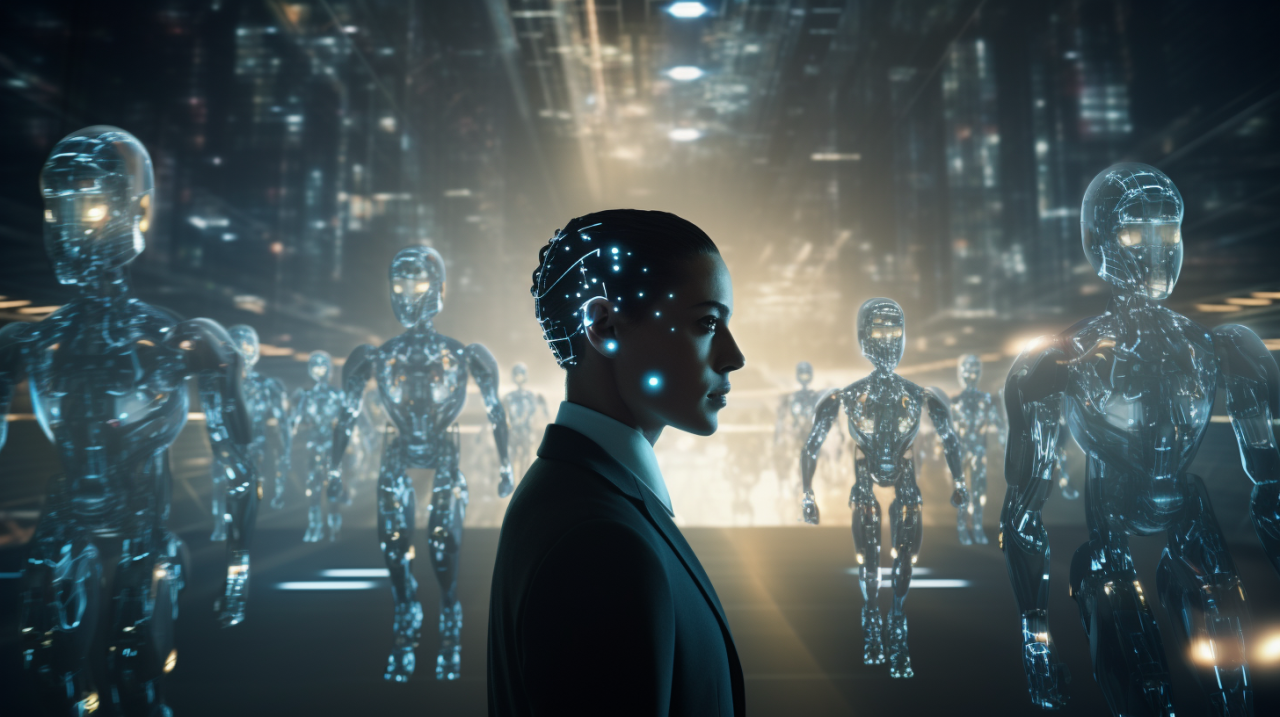In the fast-paced realm of technology, Artificial Intelligence (AI) has emerged as a transformative force, revolutionizing the way businesses operate and individuals interact with digital systems. One of the key aspects propelling this transformation is the deployment of AI agents and automation. In this blog post, we will delve into the fascinating world of AI by exploring examples of Types of AI Agents, understanding AI automation, and highlighting instances of agents and environments.
AI Agents Examples
AI agents, also known as intelligent agents, are entities designed to perceive their environment and take actions to achieve specific goals. These agents can be found in various domains, enhancing efficiency and decision-making. Let’s explore some intriguing examples of AI agents:
1. Virtual Personal Assistants
Virtual personal assistants like Siri, Google Assistant, and Amazon Alexa are prime examples of AI agents. These agents employ natural language processing and machine learning algorithms to understand user queries, retrieve relevant information, and perform tasks such as setting reminders, sending messages, and providing weather updates.
2. Chatbots
Chatbots are AI-driven conversational agents widely used in customer support, e-commerce, and various online services. They engage in conversations with users, answer queries, and guide them through processes. Platforms like Drift and Intercom leverage chatbots to enhance user experience and streamline communication.
3. Recommendation Systems
AI agents power recommendation systems that suggest products, movies, or content based on user preferences. For instance, Netflix utilizes recommendation algorithms to analyze viewing history and preferences, providing users with personalized content suggestions.
AI Automation Examples
AI automation involves the use of intelligent systems to perform tasks without human intervention. Here are notable examples of AI automation in action:
1. Robotic Process Automation (RPA)
RPA utilizes software robots to automate repetitive, rule-based tasks in business processes. These robots mimic human actions in systems and applications, reducing errors and enhancing efficiency. Companies like UiPath and Automation Anywhere employ RPA for tasks such as data entry, invoice processing, and customer onboarding.
2. Autonomous Vehicles
The automotive industry has witnessed significant advancements in AI automation with the development of autonomous vehicles. Companies like Tesla and Waymo leverage AI algorithms for real-time decision-making, enabling vehicles to navigate and respond to the dynamic environment autonomously.
3. Smart Home Systems
Smart home automation relies on AI to enhance the functionality of devices within a home. Systems like Google Home and Amazon Echo use AI to learn user preferences, automate lighting, thermostat control, and other household tasks, providing a seamless and personalized living experience.
Types of AI Agents with Examples
AI agents come in various types, each designed for specific tasks. Let’s explore different types of AI agents along with examples:
1. Reactive Agents
Reactive agents are programmed to make decisions based on predefined rules and conditions. An example is IBM’s Deep Blue, which defeated chess grandmaster Garry Kasparov in 1997 by evaluating millions of possible moves.
2. Proactive Agents
Proactive agents are capable of taking initiative and making decisions without explicit user instructions. Autonomous drones, like those used in agriculture for crop monitoring and spraying, exemplify proactive agents.
3. Learning Agents
Learning agents adapt and improve their behavior over time by learning from experience. Google’s AlphaGo, an AI program that defeated world champion Go player Lee Sedol, showcases the capabilities of learning agents in mastering complex games.
Example of Agent in AI
To illustrate the concept of an agent in AI, let’s consider a practical example: an autonomous delivery robot. In this scenario, the robot serves as an intelligent agent equipped with sensors and algorithms to navigate through urban environments, avoid obstacles, and deliver packages to specified locations. The agent continuously learns from its surroundings, optimizing its path and decision-making processes for future deliveries.
Agents and Environments Examples
Agents operate within specific environments, adapting their behavior to achieve defined goals. Here are examples highlighting the relationship between agents and environments:
1. Industrial Robotics
In manufacturing environments, AI-driven robots function as agents. They navigate factory floors, perform tasks like assembly and welding, and collaborate with human workers to optimize production processes.
2. Smart Cities
AI agents contribute to the development of smart cities by managing traffic flow, monitoring energy consumption, and enhancing public safety. Intelligent traffic management systems, utilizing AI, adjust signal timings based on real-time traffic conditions.
In conclusion, the integration of AI agents and automation is transforming industries, simplifying tasks, and enhancing user experiences. The examples discussed provide a glimpse into the diverse applications of AI, showcasing its potential to revolutionize the way we live and work. As technology continues to advance, the role of AI agents and automation will undoubtedly play a pivotal role in shaping the future landscape.




